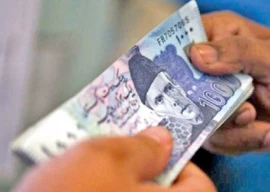
In his study, he highlights the major turning points and trends and uncovers the continuities and contingencies that have shaped Pakistan’s ‘historical travails’. The study emphasises on the ‘increased entrenchment’ of the army in Pakistan’s politics and economy, the issues surrounding the role of faith in public life, the tensions between central and local and democratic urges and the impact of the geo-political influences on internal development.
Divided into eight chapters, the book discusses the history of Pakistan in a chorological order. Chapter one highlights the ways in which Pakistan’s geography, culture and religion have shaped its development from 1947. The account of Pakistan’s first decade (1947-58) of development and its “first experiment with democracy”, presented in chapter two, argues that it was Pakistan’s “political inheritances” that finally “undermined its democratic development” while in chapter three, Talbot opines that his era was a “hinge period” between the emergence of Pakistan security state amidst the “chaos of Partition and its solidification under later military rulers”.
Covering the era of Zulfikar Ali Bhuto and General Ziaul Haq, chapter four and chapter five looks at how the leaders tackled the long-term problems of Pakistan’s identity formation while chapter six seeks to find out the workings of democracy from 1988 and considers what differences a democratic order made to Pakistan’s long-standing problems. It is crucial to note that for Talbot, neither Benazir nor Nawaz replaced the “traditional patron-client approach to politics with strongly institutionalised party structures” and it seems that both had not learnt any “lessons” from the “democratic failures of 1950s”.
Pervez Musharraf’s success and failures are discussed in chapter seven titled, “The Janus State: Pakistan under Musharraf”, an era in which Talbot said that “much was promised but very little delivered”. Chapter eight examines, in terms of both contemporary challenges and long-term historical continuities, the leadership of Asif Ali Zardari. For Talbot, post-2008 period had much in common with that of 1990s, as far as issues and problems faced by Pakistan were concerned, but the challenges of “democratic consolidation” were different and more acute than in the 1990s.
Some of the major points highlighted by Talbot in this work are that Pakistan’s history is littered with missed opportunities for building political institutions, addressing socio-economic imbalances and inequalities and moving beyond adhocism to establish a vision for the country. He suggests that Pakistan’s population problems are symptomatic of many of its future challenges and the seriousness of the historical link of current issues should not be underestimated. Talbot predicts, by way of conclusion, that “Pakistan faces massive future problems arising from population and environmental pressures” and present potentially “greater challenges to the state than the current security crisis”.
In sum, the book presents, very lucidly, coherently, and comprehensibly, the past and present of Pakistan. It is an excellent contribution and is a must-read for those interested in knowing the history, culture, society, political ups and downs, security and other issues of Pakistan.
The writer holds a PhD in Islamic Studies from Aligarh Muslim University, India
Published in The Express Tribune, February 1st, 2015.
Like Life & Style on Facebook, follow @ETLifeandStyle on Twitter for the latest in fashion, gossip and entertainment.




























1714129906-0/Clint-Eastwood-(1)1714129906-0-270x192.webp)



COMMENTS
Comments are moderated and generally will be posted if they are on-topic and not abusive.
For more information, please see our Comments FAQ